Order Passeriformes Genus Oenanthe Higher classification Cercomela | Phylum Chordata Family Muscicapidae Scientific name Cercomela fusca Rank Species | |
 | ||
Similar Bird, Cercomela, Sombre rock chat, White‑browed bush chat, Somali wheatear | ||
Bird call or song of indian chat or brown rock chat
The brown rock chat or Indian chat (Oenanthe fusca) is a bird in the chat (Saxicolinae) subfamily and is found mainly in northern and central India. It is often found on old buildings and rocky areas. It resembles a female Indian robin but lacks the reddish vent and differs in posture and behaviour apart from being larger. In flight it bears some resemblance to thrushes and redstarts. It feeds on insects, captured mainly on the ground. It was formerly placed as the sole species in the genus Cercomela but is now included with the wheatears in the genus Oenanthe.
Contents
- Bird call or song of indian chat or brown rock chat
- Taxonomy and systematics
- Description
- Distribution
- Breeding
- References
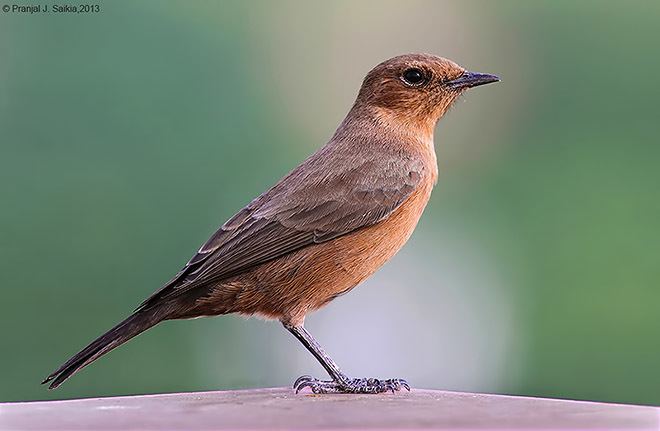
Taxonomy and systematics
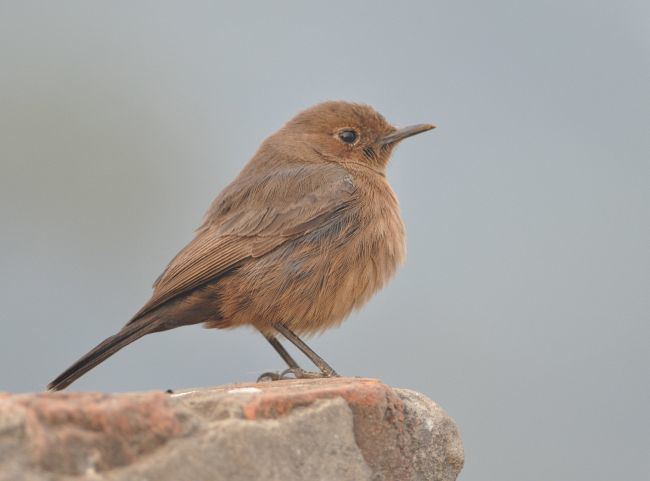
The species was described by Edward Blyth in 1851 under the binomial name Saxicola fusca based on a specimen from Mathura ("Muttra" in original). The beak is slender and is slightly curved at the tip. The second primary is the longest and the 12 feathered tail is rounded. It is considered to be monotypic although Walter Koelz suggested a new subspecies ruinarum in 1939 based on a specimen from Bhopal. It was the only species of Cercomela found outside Africa and its placement was questioned in the past. Molecular phylogenetic studies in 2010 and 2012 found that the genus Cercomela was polyphyletic with five species, including the brown rock chat which is nested within the genus Oenanthe where it is placed in newer taxonomic treatments. As part of a reorganization of the species to create monotypic genera, the brown rock chat was assigned to the genus Oenanthe.
In central India, the local name of Shama has been noted.
Description
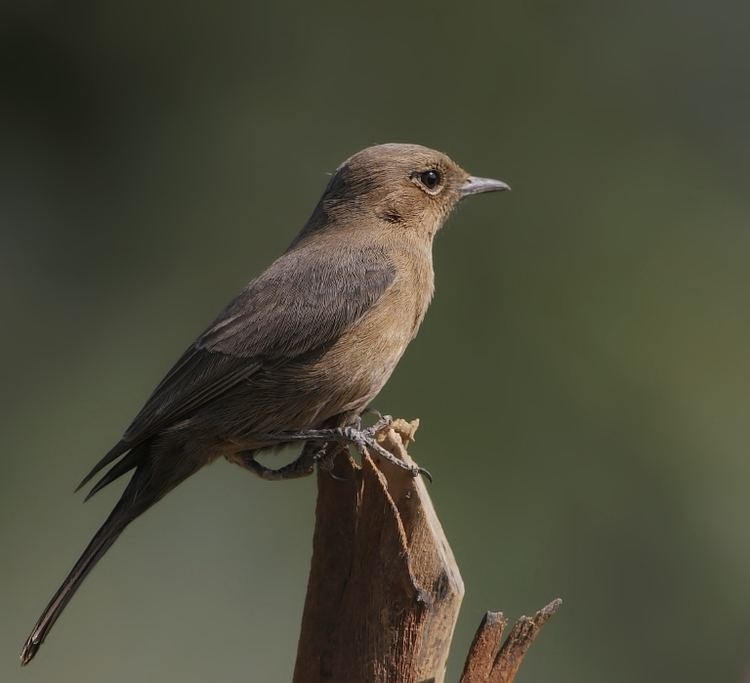
The brown rock chat is larger than the somewhat similar looking Indian robin and is about 17 cm long. It is uniformly rufous brown with the wings and tail of a slightly darker shade. The brown on the undersides grades into a dark grey-brown vent. In flight it resembles a female blue rock thrush and is usually found singly or in pairs on old buildings or rocky areas. The sexes are indistinguishable in the field. When feeding on the ground it sometimes flicks open its wings and tail. It also has a habit of slowly raising its tail slightly, fanning it and bobbing its head. They feed mainly on insects, picked off the ground. They have been known to feed late and forage on insects attracted to artificial lighting.
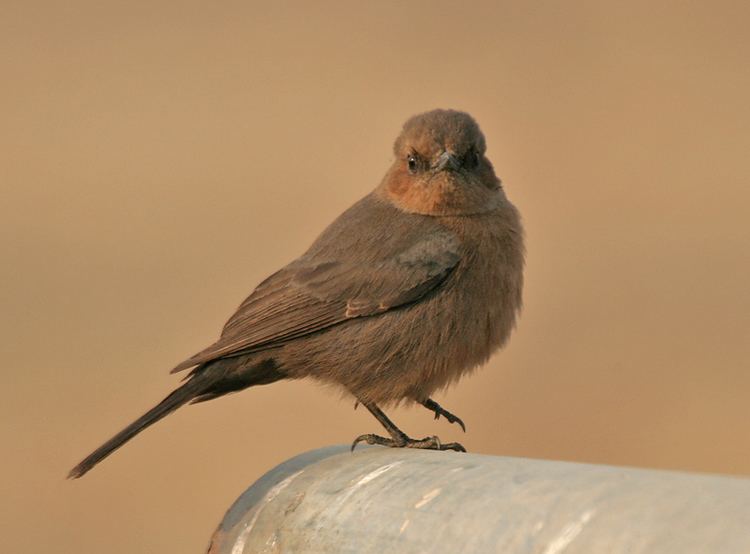
They have a wide repertoire of calls. Nearly eight different kinds of calls have been noted and these include territorial calls, begging call, feeding call, alarm call, threat call, contact call, distress call, roosting and emergence calls. The usual call is a short whistling chee delivered with a rapid bob and stretch and the alarm call is a harsh chek-check. The song is thrush like with a number of notes, often including imitations of the songs of other bird species including the yellow-eyed babbler, black-winged cuckooshrike and Tickell's blue flycatcher.
Distribution
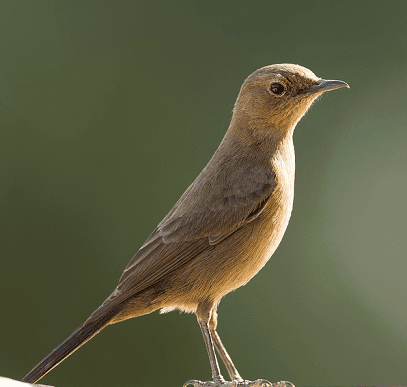
The species is nearly endemic to India, distributed north of the Narmada, west to Gujarat (mainly Kutch but extending south) and east to Bengal bordered on the north by the Himalayas where it is found only until about 1300 m in the foothills. Its distribution extends into northern Pakistan where it is restricted east of the Chenab River. Although largely resident, some populations make movements in response to weather. In the foothills of the Himalayas it moves higher up in summer, appear in Dehra Dun in spring and leaving before the onset of winter. The species has been seen in Nepal. It is a common species although very patchily distributed.
Breeding
The breeding season extends from spring to summer and more than one brood is raised. The nest is a cup of grass, hair and clods placed in a ledge in a roadside cutting, wall or window even making use of occupied houses. The foundation of the nest is made up of pebbles and clay. The nests are guarded against intruders and the parents will chase palm squirrels and other birds that approach too close. The usual clutch is 3 to 4 pale blue eggs which are incubated by the female alone. The young leave the nest after about two weeks after hatching.
